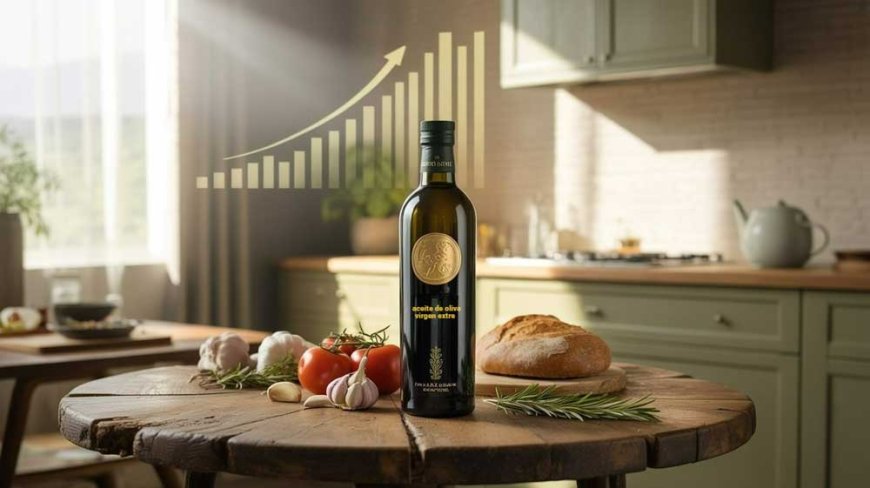Why is a Spanish olive oil merchant optimistic about the growth potential of the Chinese market for olive oil?
Spanish olive oil producers have long looked beyond their borders to expand their global reach. Today, one of the brightest prospects on the horizon is China — a market that has transformed rapidly in both economic capacity and consumer sophistication. For many in the Spanish olive oil industry, optimism about China’s potential is not just hopeful — it's strategic and data-driven. Here’s why.

A Spanish olive oil merchant and industry experts are notably optimistic about the prospects of the Chinese market, driven by several converging factors that make China a strategic growth opportunity for Spain’s olive oil exports.
Rising Demand Fueled by China’s Growing Middle Class and Health Awareness
The most compelling reason for optimism lies in the evolution of the Chinese consumer. The expanding middle class, now numbering in the hundreds of millions, is increasingly focused on health and wellness. With rising incomes, Chinese families are shifting dietary habits and exploring healthier food options — a trend that places extra virgin olive oil firmly in the spotlight.
Once considered a luxury, olive oil has become more accessible as salaries rise and awareness of its health benefits spreads. Olive oil, rich in monounsaturated fats and antioxidants, is perceived as a premium, healthful product. As a result, Chinese olive oil consumption has soared from just 12,000 tons in the 2008/09 crop year to 42,500 tons in 2022/23 — a nearly fourfold increase in just over a decade.
Strong Preference for European Olive Oil, Especially Spanish
This surge in demand isn’t indiscriminate — Chinese consumers strongly prefer European olive oil, particularly that from Spain. In 2023 alone, China imported approximately $7.23 million worth of olive oil from Spain, cementing its position as China’s top olive oil supplier by value, ahead of Italy.
This preference is driven by trust in European production standards, as well as perceptions of authenticity and quality. Spanish olive oil enjoys a pricing advantage over other European brands, making it more competitive in the Chinese market while maintaining the quality reputation essential to gaining consumer loyalty.
Market Development Efforts by Spanish Producers
Spanish olive oil merchants are not leaving success in China to chance. They’re proactively investing in market development, organizing tasting events, seminars, and promotional campaigns in major cities like Beijing. These events often target media representatives, social influencers, distributors, and importers, aiming to raise awareness about Spanish extra virgin olive oil’s health benefits and culinary versatility.
At the heart of these efforts is consumer education. Many Chinese consumers are still unfamiliar with olive oil — how to use it, its grades, and its benefits. By building retail partnerships and telling compelling product stories, Spanish producers are steadily bridging this knowledge gap.
Regional and Demographic Market Nuances
Spain’s merchants also understand that China is not a monolith. Consumption patterns vary widely between regions. Metropolitan areas such as Beijing, Shanghai, and Guangzhou — which together house nearly 100 million people — are the epicenters of olive oil demand. Younger, urban consumers who have traveled abroad and experienced Mediterranean cuisine firsthand are driving this growth.
However, in smaller cities and rural areas, traditional oils like soybean and peanut still dominate. Reaching these markets will require tailored strategies, including localized marketing, regional distribution partnerships, and possibly smaller packaging sizes to encourage trial and adoption.
Production and Market Supply Context in Spain
Spain’s position as the world’s leading olive oil producer enables it to meet growing global demand. Despite recent price volatility and downward price pressure due to high supply in the 2024/25 season — with production topping 1.4 million tons — Spain continues to export high volumes, with China among its most promising destinations.
Maintaining quality standards amid price competition will be critical. Spanish producers know that supply stability and authenticity are key to securing a lasting foothold in China’s evolving food landscape.
Challenges and Risks
While the long-term outlook is bright, Spanish exporters remain cautious about short-term challenges. Rising youth unemployment and changing eating habits in China could slow growth temporarily. Moreover, geopolitical tensions and potential trade disputes between the European Union and China present a real risk, including the possibility of retaliatory tariffs.
Additionally, food safety scandals in China have made consumers more skeptical of imported food products. Spanish olive oil brands must continue to emphasize traceability, certifications, and country of origin labeling to build and maintain trust.
Long-Term Growth Rooted in Strategy and Cultural Synergy
For the Spanish olive oil industry, China represents not just a growing market, but a cultural and culinary opportunity. Rising incomes, health awareness, and a preference for trusted European products make China an ideal fit for Spain’s olive oil exports. Active efforts in consumer education, marketing, and distribution are already yielding results — and the story is just beginning.
Spanish merchants, well-versed in patience and long-term cultivation, are betting big on China — and with good reason. If trends continue, the Chinese market may soon become one of the most significant global arenas for premium olive oil consumption, and Spanish producers will be at its forefront.
What's Your Reaction?


























